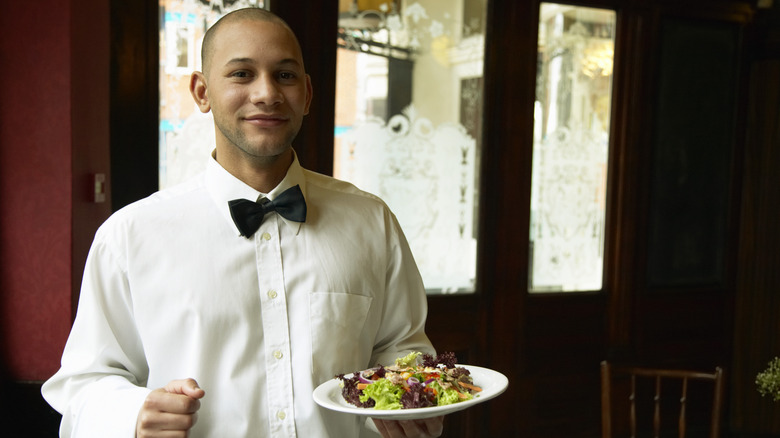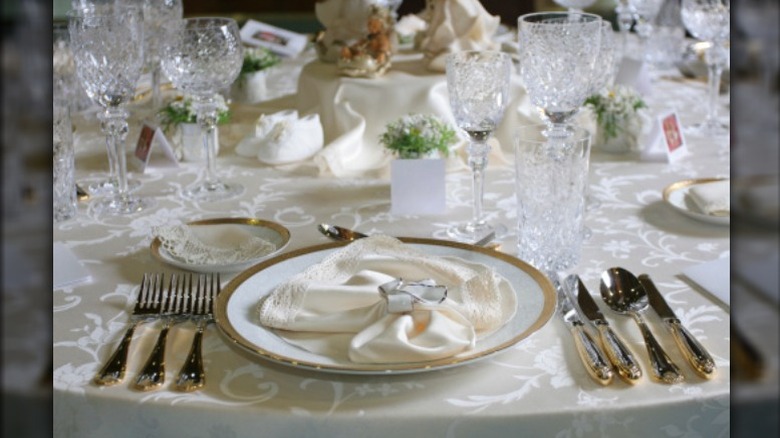The Old Fashioned Reason You Get Served On The Left At Fancy Restaurants
When it comes to fine dining it can seem like there are an awful lot of rules. What do you wear? Which fork do you use first? How do you decode the wine list, and what on earth is an amuse bouche? Recently, we've been trying to decode fine dining for you — for example, we've got a list of 14 fine dining rules that make absolutely no sense and should be broken. We've also exposed some of the secrets fine dining restaurants don't want you to know.
Now, we're going to shed light on a curious aspect of fine dining that you may not have even ever noticed. Why do you get served on the left at fancy restaurants? The answer, like many conventions of fine dining, is a bit old-fashioned.
Historically, meals were served off of large platters, with waiters coming around to offer diners their choice. Since most people are right-handed, it's thought that serving from the left was less obtrusive and easier for both diner and waiter. Plates would later be cleared from the right side of the diner. Even though today, most fine dining meals are served already plated, that custom of "serve from the left, clear from the right" has endured.
Serving from the left isn't the only old-fashioned custom still around today
Serving from the left isn't the only fine dining custom that has held over from days gone by. For instance, when setting a table, the knife should always be on the right with the blade pointing in towards the plate. This tradition is believed to have originated in a time when placing a knife with the blade away from others would have shown that a host trusted his guests.
While the idea of still serving from the left and clearing from the right might seem old-fashioned today, and certainly doesn't work in settings with booths like so many casual restaurants have these days, it certainly isn't as stuffy as, say, ballet service. In this scenario, a single table, or series of tables, is served all at once, with a whole army of wait staff acting in perfect synchronicity to drop all the plates on the table at the exact same time.
In fact, serving from the left makes sense from a dinner flow point of view, especially in loud, crowded restaurants where you might not notice your server until they're about to deliver your plate. Knowing to expect your meal to arrive on your left means you'll be on the lookout, with less of a chance of knocking plates and glasses out of hands. Maybe this is one fine dining custom that should stick around.

